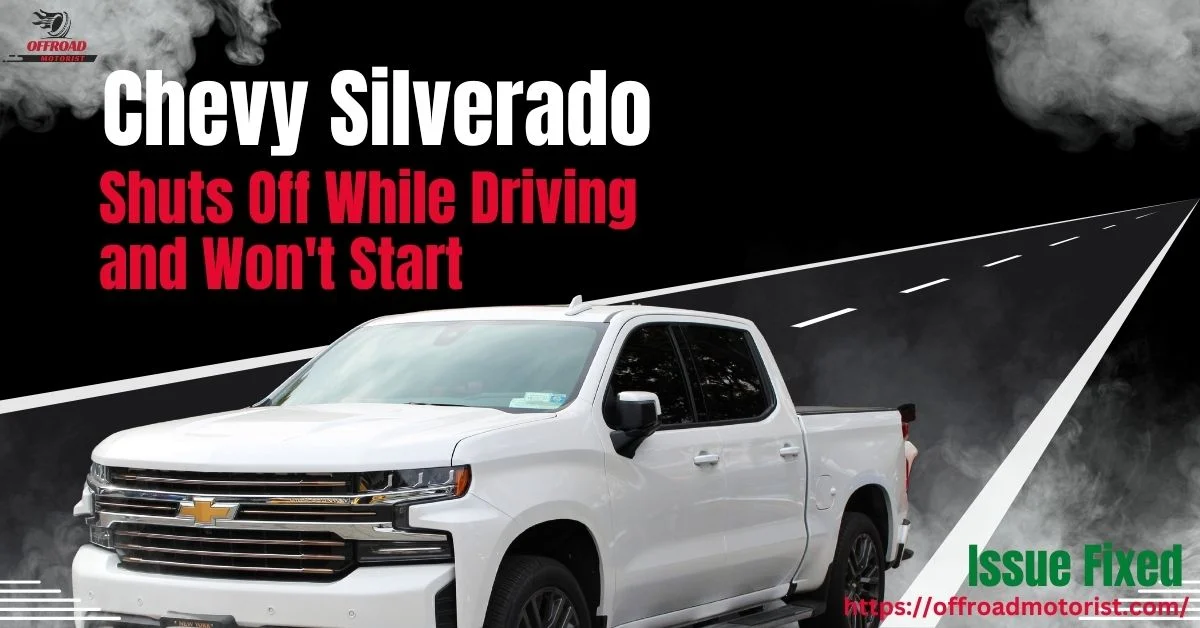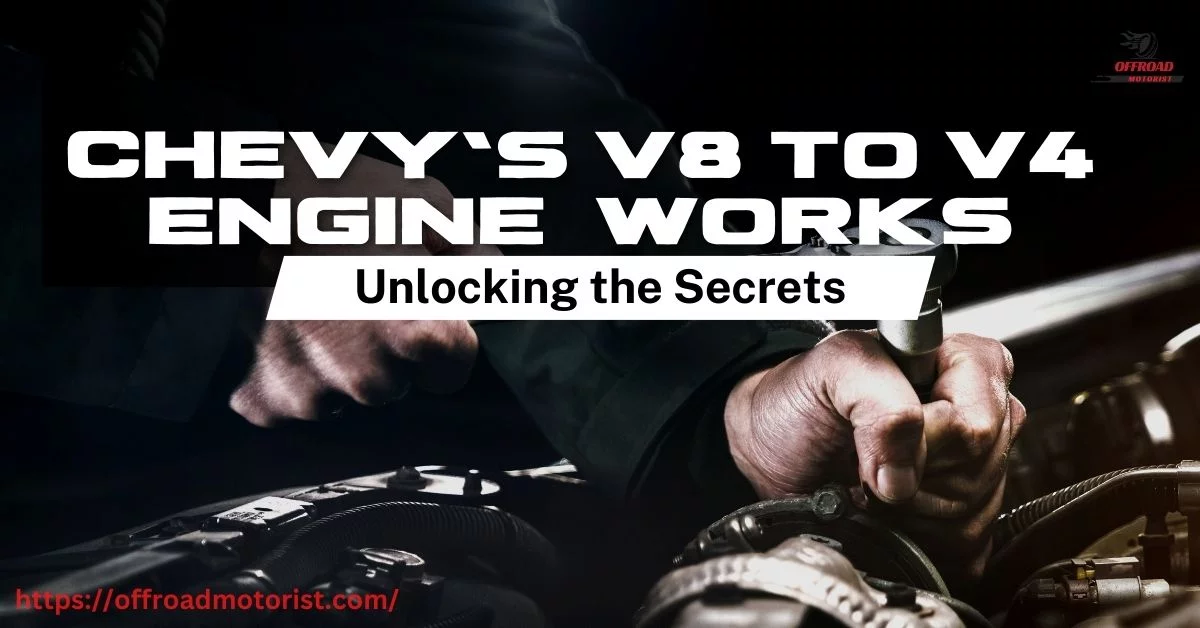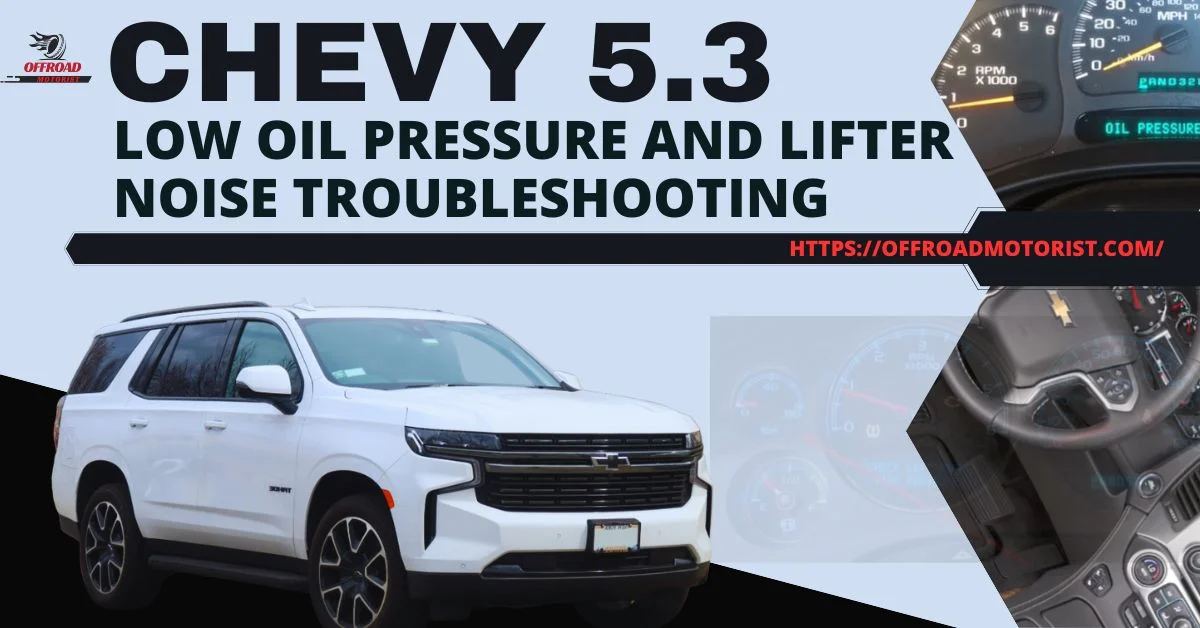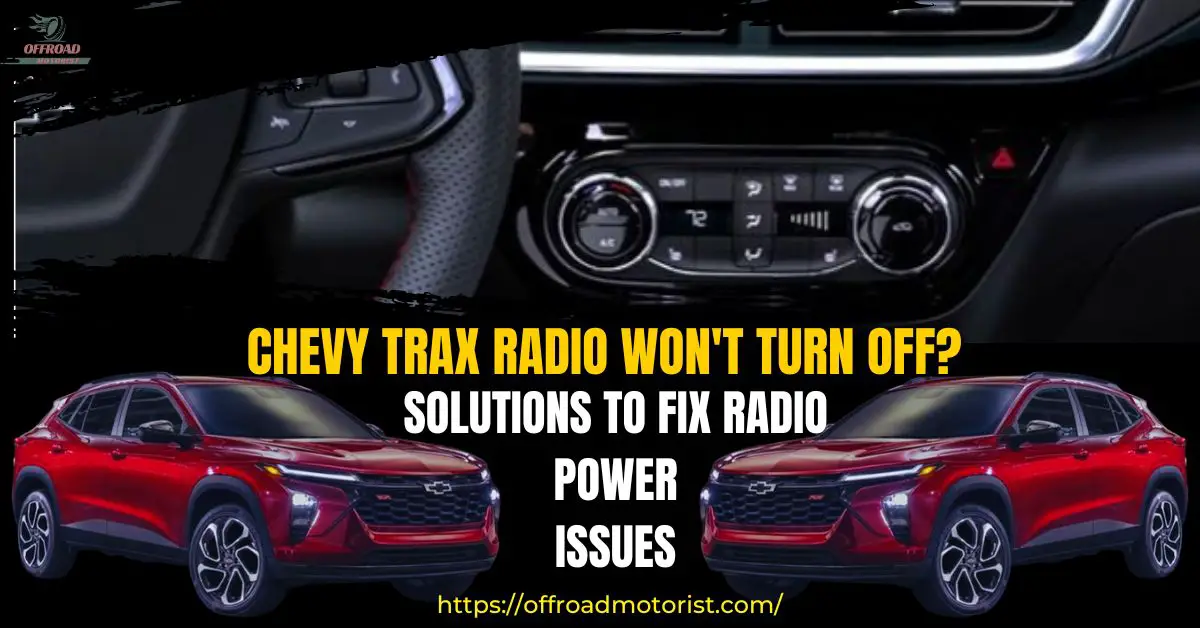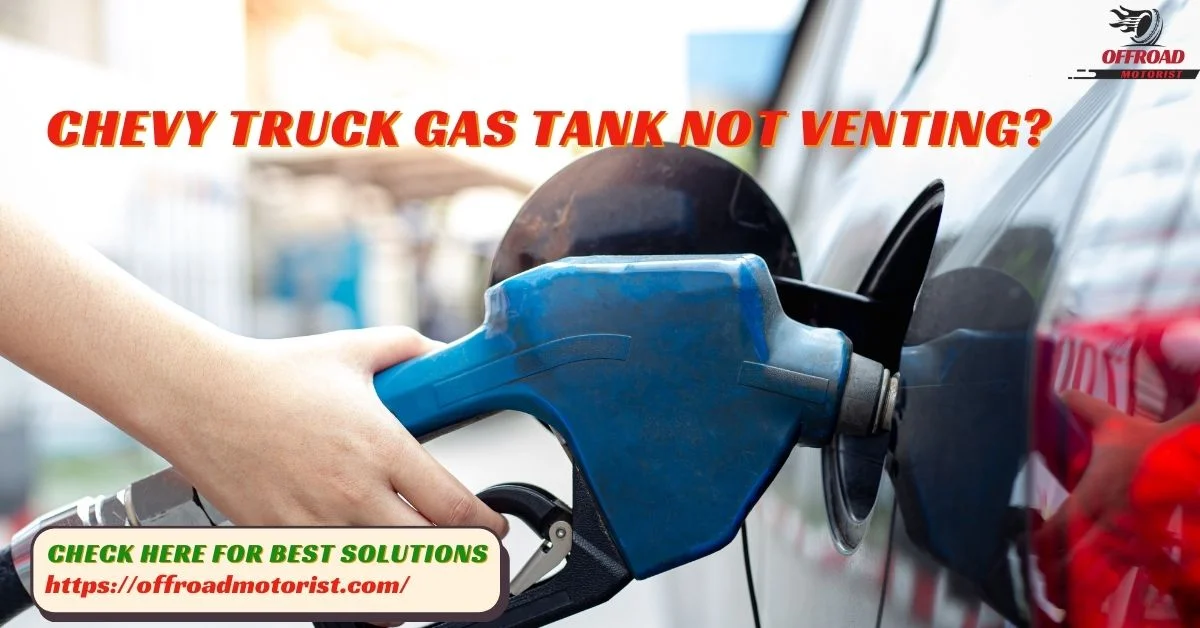Most Common Problems With Chevy 305 And How To Solve Them
The Chevy 305 engine, also known as the “Small-Block,” has been a staple in the Chevrolet lineup for decades. But despite its longevity and reliability, some common issues can arise with this engine.
This blog post will look at some of the most common problems with Chevy 305 and provide solutions for how to fix them. So, this post is for you whether you’re a Chevy enthusiast or a 305 owner.
Understanding the common problems with the Chevy 305 engine is essential for maintaining the health and longevity of your engine. It will help you make decisions about maintenance, repairs, and even purchasing a used car.
History of the Chevy 305 engine
The Chevy 305 is a small-block V8 engine produced by General Motors. It was first introduced in 1976 as a replacement for the Chevy 350 engine in vehicles such as the Camaro and Nova.
The 305 was designed to be a more fuel-efficient alternative to the larger 350 engine and was used in various GM vehicles throughout the 1970s and 1980s. Its size and fuel efficiency made it a popular choice for smaller cars, trucks, and vans.
In the early years of production, the 305 featured a 2-barrel carburetor and was rated at around 130 horsepower. However, in 1980, GM introduced a new version of the 305 with a 4-barrel carburetor and a higher compression ratio, increasing its horsepower to around 150.
Throughout the 1980s, the Chevy 305 remained a popular choice for GM vehicles. It was used in various models, including the Camaro, Firebird, Monte Carlo, El Camino, and Chevy pickups. It was also used in some vans and SUVs, such as the Chevy Astro and GMC Safari.
In the 1990s, however, the Chevy 305 began to phase out production as GM introduced newer, more advanced engines. The last vehicle to use the 305 engine was the Chevy Caprice in 1996.
Today, the Chevy 305 is considered a classic engine and is still popular among car enthusiasts and collectors. Many people continue to rebuild and modify these engines for use in classic cars and hot rods.
The 305 has a reputation for being a durable and reliable engine, even though it was phased out over 25 years ago.
The Good Sides of Chevy 305
The good sides of the Chevy 305 engine:
- Affordable: The Chevy 305 engine is inexpensive, making it a cost-effective choice for those looking to rebuild or replace an engine.
- Durable: The 305 engine is known for its durability and longevity, provided it is well-maintained.
- Good torque: The 305 engine has good torque, making it a good choice for towing and hauling.
- Versatile: The 305 engine can be found in various vehicles, including trucks, vans, and cars.
- Easy to work on: The 305 engine is relatively straightforward, making it easy for a mechanic or DIY enthusiast to work on.
Most Common Problems with Chevy 305 Engine
The Chevy 305 engine is known for its affordability and durability but has some common issues. Before starting detailed explanations of common problems with 305 engine, let’s have a look at the overview:
- Timing chain and gear issues
- Overheating
- Oil leaks
- Valve guide wear
- Piston ring wear
Detailed explanations of each problem:
Timing chain and gear issues:
The timing chain and gears in the 305 engine can wear out over time, causing the engine to run poorly or stall. Timing chain and gear issues can cause the engine to stall or run poorly.
You’ll notice a ticking or rattling noise from the front of the engine, poor engine performance, and a check engine light. Causes include lack of proper maintenance and use of low-quality oil.
Overheating:
The 305 engine is known to have issues with overheating, which can cause damage to the engine and other components. It can damage the engine and other components.
Symptoms include a temperature gauge reading higher than normal, steam coming from the engine, and a sweet smell from the coolant. Causes include a malfunctioning thermostat, clogged radiator, or low coolant levels.
Oil leaks:
Oil leaks are a common issue with the 305 engine and can be caused by various factors. You will find a puddle of oil under the vehicle, a burning oil smell, and low oil pressure.
Causes include worn or damaged gaskets, a leaking oil pan, or a damaged oil pump. Oil leaks can lead to low oil pressure and damage to the engine.
Valve guide wear:
As the 305 engine ages, the valve guides can wear out and cause the engine to lose power and efficiency.
Symptoms of valve guide wear are poor engine performance, a decrease in fuel economy, and a ticking or knocking noise from the engine. Causes include lack of proper maintenance and use of low-quality oil.
Piston ring wear:
The piston rings in the 305 engine can wear out over time, causing the engine to lose power and efficiency.
Symptoms include poor engine performance, decreased fuel economy, and a burning oil smell. Causes include lack of proper maintenance, use of low-quality oil, and excessive engine wear.
Note: These common problems with the Chevy 305 engine can significantly impact the engine’s performance. It is important to address these issues as soon as possible to minimize damage and ensure the engine’s best performance.
Solutions to Common Problems with the Chevy 305
If you’re experiencing any of these issues or concerns, it’s best to have a qualified mechanic diagnose and repair the problem. Let’s dive into solving some most common problems with Chevy 305 engine.
I. Fixing Timing chain and gear issues:
Timing chain and gear issues with the Chevy 305 can cause significant engine damage if left unrepaired. The following steps should be taken to fix the Timing chain and gear issues:
01. Remove the engine:
The engine will need to be removed from the vehicle to access the timing chain and gears. This will typically require the use of a hoist or engine stand.
02. Remove the timing cover:
Once the engine is out of the vehicle, the timing cover will need to be removed. This will reveal the timing chain and gears.
03. Inspect the timing chain and gears:
The timing chain and gears should be inspected for wear, stretching, or damage. If the chain is stretched or the gears are worn, they need to be replaced.
04. Replace the timing chain and gears:
If the timing chain or gears need to be replaced, the old components should be removed and new ones installed. According to the engine’s service manual, the timing should be set to the correct specifications.
05. Reinstall the timing cover:
Once the timing chain and gears are replaced and set, the timing cover should be reinstalled.
06. Reinstall the engine:
After the timing cover is reinstalled, the engine can be reinstalled in the vehicle.
Always Remember that a timing chain is a critical component, so if the engine shows any signs of timing chain problems, it should be addressed as soon as possible to avoid engine damage.
II. Fixing Overheating Issues:
Various factors, including a faulty thermostat, a clogged radiator, or a malfunctioning water pump, can cause overheating issues with the Chevy 305. To fix this problem, the following steps should be taken:
01. Check the coolant level:
The first step in troubleshooting overheating issues is to check the coolant level in the radiator. If the level is low, the system may need to be refilled with coolant.
02. Check the thermostat:
The thermostat regulates the flow of coolant through the engine. If the thermostat is stuck closed, it may cause the engine to overheat. To check the thermostat, remove it from the engine and place it in a pot of boiling water. If the thermostat does not open, it will need to be replaced.
03. Check the radiator:
The radiator is responsible for dissipating heat from the coolant. If the radiator is clogged with debris or has a leak, it may cause the engine to overheat. To check the radiator, inspect it for leaks and flush it with a radiator flush solution to remove debris.
04. Check the water pump:
The water pump is responsible for pumping coolant through the engine. If the water pump malfunctioning or leaks, it may cause the engine to overheat. To check the water pump, inspect it for leaks and check the drive belt to ensure it is tight.
05. Check the fan:
The fan helps to dissipate heat from the radiator. If the fan is not functioning properly, it may cause the engine to overheat. To check the fan, turn on the engine and visually inspect it to ensure it is spinning.
06. Check the hoses:
Check all hoses connected to the engine to ensure they are not leaking, swollen, or having any other visible issues.
Other issues, such as a malfunctioning head gasket or a clogged engine oil cooler, can cause overheating.
III. Fixing Oil leak Issues:
Various issues, including worn or cracked gaskets, loose or missing oil pan bolts, or a damaged oil pan, can cause leaks in the Chevy 305. To fix this problem, the following steps should be taken:
01. Locate the source of the leak:
The first step in troubleshooting oil leaks is locating the leak’s source. This can be done by visually inspecting the engine and looking for any signs of oil drips or puddles.
02. Check the oil pan:
The oil pan is a common source of leaks in the Chevy 305. To check the oil pan, remove the oil pan drain plug and inspect the gasket for signs of wear or damage. If the gasket is damaged, it will need to be replaced.
03. Check the valve cover gaskets:
The valve cover gaskets can also leak in the Chevy 305. To check the valve cover gaskets, remove the valve covers and inspect the gaskets for signs of wear or damage. If the gaskets are damaged, they will need to be replaced.
04. Check the oil pump:
The oil pump is responsible for pumping oil throughout the engine. If the oil pump malfunctioning or leaks, it may cause oil to leak from the engine. To check the oil pump, inspect it for leaks and check the drive belt to ensure it is tight.
05. Check the oil filter:
The oil filter can also be a source of leaks. To check the oil filter, remove it and inspect the gasket for signs of wear or damage. If the gasket is damaged, it will need to be replaced.
06. Check the oil pressure sender:
The oil pressure sender is responsible for sending oil pressure data to the oil pressure gauge. If the oil pressure sender is leaking, it may cause oil to leak from the engine.
To check the oil pressure sender, remove it and inspect it for signs of wear or damage. If the sender is damaged, it will need to be replaced.
07. Check the rear main seal:
The rear main seal is responsible for preventing oil from leaking out of the back of the engine. If the rear main seal is damaged, it may cause oil to leak from the engine.
To check the rear main seal, remove the flywheel or flexplate to inspect the seal. If the seal is damaged, it will need to be replaced.
Other issues, such as a malfunctioning oil cooler or a damaged oil filter adapter, can cause oil leaks.
IV. Fixing Valve guide wear Issues:
Valve guide wear issues in the Chevy 305 can be caused by various factors, including high mileage, excessive heat, or poor lubrication. To fix this problem, the following steps should be taken:
01. Remove the cylinder head:
The cylinder head will need to be removed from the engine to access the valve guides. This requires a cylinder head removal tool and a valve spring compressor.
02. Inspect the valve guides:
Once the cylinder head is removed, the valve guides can be inspected for wear. If the guides show excessive wear, they will need to be replaced.
03. Replace the valve guides:
If the valve guides need to be replaced, the old ones should be removed and the new ones installed. The new guides should be a tight fit and should be properly lubricated to prevent wear in the future.
04. Reinstall the cylinder head:
Once the new guides are installed, the engine can reinstall the cylinder head.
05. Adjust the valves:
Once the cylinder head is reinstalled, the valves need to be adjusted to the correct specifications, according to the engine’s service manual.
Valve guide wear issues are common in high-mileage engines and may require replacing other components like valve seats and valves.
V. common problems with chevy 305 Issues:
Piston ring wear issues in the Chevy 305 can be caused by various factors, including high mileage, poor lubrication, or excessive engine heat.
To fix this problem, the engine will need to be disassembled, and the piston rings will need to be replaced. Here are the steps that should be taken to fix piston ring wear issues:
01. Remove the engine from the vehicle:
The engine will need to be removed to access the pistons and rings. This typically requires an engine hoist and a set of engine removal tools.
02. Disassemble the engine:
Once the engine is removed, it will need to be disassembled. This typically involves removing the cylinder head, connecting rods, and pistons.
03. Inspect the piston rings:
Once the pistons and rings are removed, they can be inspected for wear. If the rings show excessive wear, they will need to be replaced.
04. Replace the piston rings:
If the piston rings need to be replaced, the old rings should be removed, and new ones should be installed. The new rings should be a tight fit and should be properly lubricated to prevent wear in the future.
05. Reassemble the engine:
Once the new rings are installed, the engine can be reassembled. This typically involves reinstalling the connecting rods, pistons, and cylinder head.
06. Adjust the valves:
Once the engine is reassembled, the valves will need to be adjusted to the correct specifications, according to the engine’s service manual.
07. Reinstall the engine:
Once the engine is reassembled, and the valves are adjusted, the engine can be reinstalled in the vehicle.
Piston ring wear issues are common in high-mileage engines and may require replacing other components like pistons, bearings, and crankshaft. This is a complex procedure that requires specialized tools and experience. It’s best to have a qualified mechanic to perform this task.
Tips for preventing future problems with the 305 engine:
Here are some tips for preventing future problems with the Chevy 305 engine:
01. Regular maintenance:
Regular maintenance is crucial for preventing future problems with the Chevy 305 engine. This includes regular oil changes, using the correct oil and lubricants, and following the recommended maintenance schedule in the engine’s service manual.
02. Keep the engine cool:
Overheating can cause various problems in the Chevy 305 engine, including warping and cracking of the cylinder heads and damage to the pistons and rings.
To prevent overheating, ensure the radiator and cooling system is in good working order and the engine is running at the correct temperature.
03. Keep the engine clean:
Dirt and debris can accumulate in the engine over time, causing damage and wear to the internal components. To prevent this, ensure the engine is kept clean, and the air filter is changed regularly.
04. Use the correct fuel:
Using the correct fuel is crucial for preventing problems in the Chevy 305 engine. Make sure to use the correct octane rating and avoid using contaminated or stale fuel.
05. Check and replace worn parts:
As the engine ages, some parts, such as belts, hoses, and gaskets, will wear out. Check these parts regularly and replace them if necessary to prevent future problems.
06. Avoid prolonged idling:
Prolonged idling can cause the engine to overheat and can also cause excessive wear on the internal components. To prevent this, avoid prolonged idling and use the engine only when necessary.
07. Drive at moderate speeds:
High speeds and loads can cause excessive wear on the engine components and lead to future problems. Try to drive at moderate speeds and avoid heavy loads to prevent this.
08. Have a qualified mechanic inspect the engine:
Having a qualified mechanic inspect the engine regularly can help catch any potential problems before they become serious.
By following these tips, you can help prevent future problems with the Chevy 305 engine and keep it running smoothly for many years.
Cost and difficulty of repairing Chevy 305 Engine:
The cost and difficulty of repairs can vary depending on the specific problem with the Chevy 305 engine. For example, replacing the timing chain and gears can be relatively inexpensive and easy with the right tools and parts.
On the other hand, a top-end rebuild can be more expensive and more difficult to do, requiring specialized tools and knowledge. Generally, it’s best to consult a professional mechanic to understand better the cost and difficulty of repairs for your specific engine issue.
If you won a Silverado with a 6.0L Engine and struggling to start it when warm, you can see our post-Chevy 6.0 Hard Starting When Warm & How To Troubleshoot The Issue
FAQs
In this session, we’ll try answering some commonly asked questions on Chevy 305 Engine to ensure you have all the necessary information to make informed decisions about your vehicle.
What is the horsepower of the Chevy 305 engine?
The horsepower of the Chevy 305 engine varied depending on the model and year of the vehicle it was used in. On average, it produced between 145-190 horsepower.
What is the torque of the Chevy 305 engine?
The torque of the Chevy 305 engine varied depending on the model and year of the vehicle it was used in. On average, it produced between 240-280 lb-ft of torque.
What is the compression ratio of the Chevy 305 engine?
The compression ratio of the Chevy 305 engine varied depending on the model and year of the vehicle it was used in. On average, it had a compression ratio of 8.5:1
What is the firing order & oil capacity of the Chevy 305 engine?
The firing order of the Chevy 305 engine is 1-8-4-3-6-5-7-2. The oil capacity of the Chevy 305 engine is 4 quarts.
What type of transmission was used with the Chevy 305 engine?
The Chevy 305 engine was typically paired with a TH-350 or a TH-700R4 transmission.
What is the displacement of the Chevy 305 engine?
The Chevy 305 engine displaces 5.0 liters or 305 cubic inches.
What are the bore and stroke of the Chevy 305 engine?
The bore and stroke of the Chevy 305 engine are 3.736 inches and 3.48 inches, respectively.
What is the weight of the Chevy 305 engine?
The weight of the Chevy 305 engine is approximately 500 lbs.
What is the difference between the Chevy 305 engine and the Chevy 350 engine?
The Chevy 350 engine is larger than the Chevy 305, with a displacement of 5.7 liters or 350 cubic inches. The Chevy 350 also has a higher horsepower and torque rating than the Chevy 305.
What is the lifespan of the Chevy 305 engine?
With proper maintenance, the Chevy 305 engine can last for over 200,000 miles.
Can the Chevy 305 engine be rebuilt?
Yes, the Chevy 305 engine can be rebuilt. It is a common practice for those who want to keep their vehicle running for a long time.
Final Thoughts
Regularly maintain your Chevy 305 engine to ensure that any potential issues are caught early on before they become major problems. Some problems may be too difficult or complex, so it’s best to consult a professional mechanic.
This includes regular oil changes, timing chains, gear inspections, radiator flushes, and overall tune-ups. Early detection can save you a lot of money and hassle in the long run.



![Chevy Transfer Case Interchange Chart [Everything you need to Know] chevy transfer case interchange chart](https://offroadmotorist.com/wp-content/uploads/2023/03/chevy-transfer-case-interchange-chart-150x150.jpg)



